Classification Of SUP
May 05, 2023
Leave a message
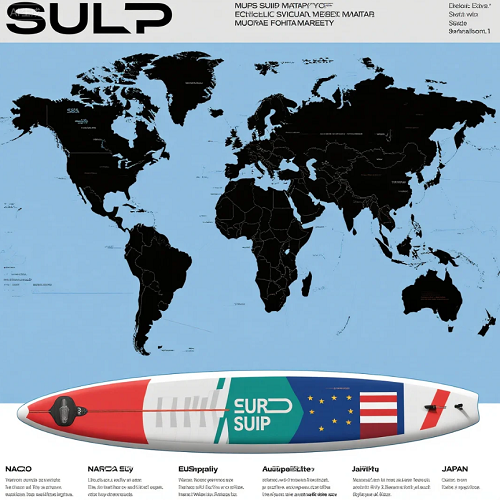
Introduction to SUP Classification
Stand Up Paddleboarding (SUP) is one of the fastest growing water sports in the world. In recent years, more people from North America, Europe, and Australia have started enjoying SUP for recreation, fitness, and professional sports. For business buyers, understanding the classification of SUP boards is important. Choosing the right types for your store, rental business, or resort can help you sell faster, reduce returns, and improve customer satisfaction.
As a B2B customer, you are not just buying one board for yourself. You are buying for many end users, each with different needs. Knowing the classifications will help you match the right board to the right customer. At Ridewave, we design and produce SUP boards for every major category, so our business customers can always find the perfect mix for their market.
Products Description
SUP boards can be classified by their intended use. The main categories include:
Recreational / All-round SUP: Best for beginners and casual paddlers. Stable, easy to use, works in many water conditions. Ideal for rental shops and family use.
Touring SUP: Designed for long-distance paddling. Narrower and longer, faster in the water. Great for tour companies and adventure customers.
Racing SUP: Built for speed, lightweight, and sleek design. For professional or competitive paddlers.
Surf SUP: Shorter boards with more rocker, for riding ocean waves. Popular with surf schools.
Yoga / Fitness SUP: Wide, stable boards for fitness activities on water. Great for resorts and wellness centers.
Fishing SUP: Wide, high-capacity boards with mounts for fishing gear.
For example, Ridewave Touring SUP boards are popular with rental businesses because they offer both comfort and stability over long distances.
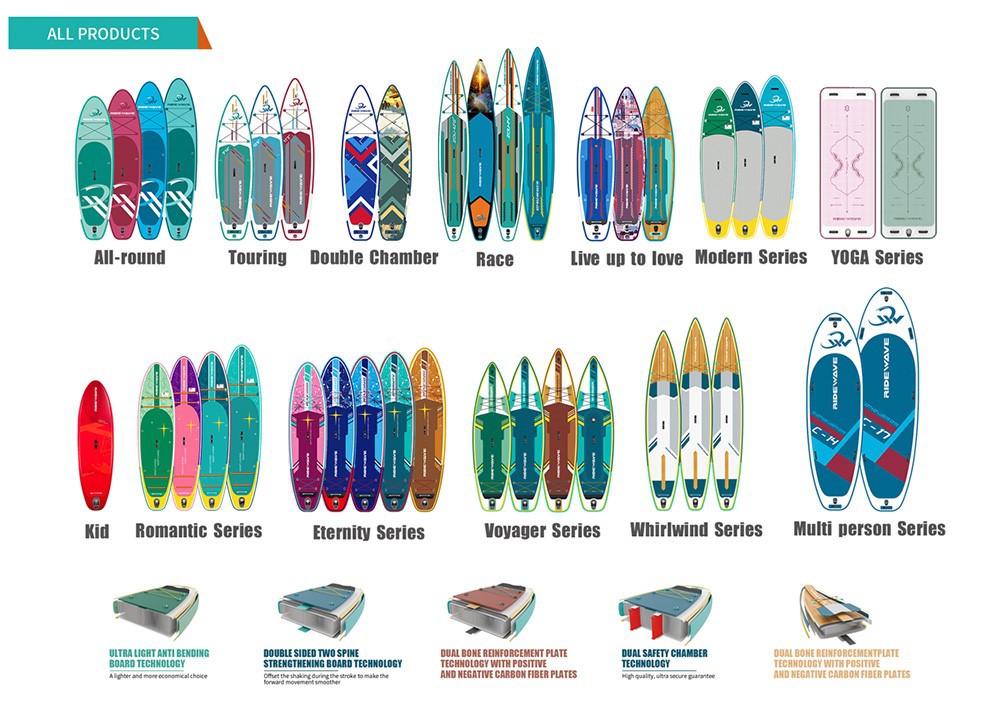
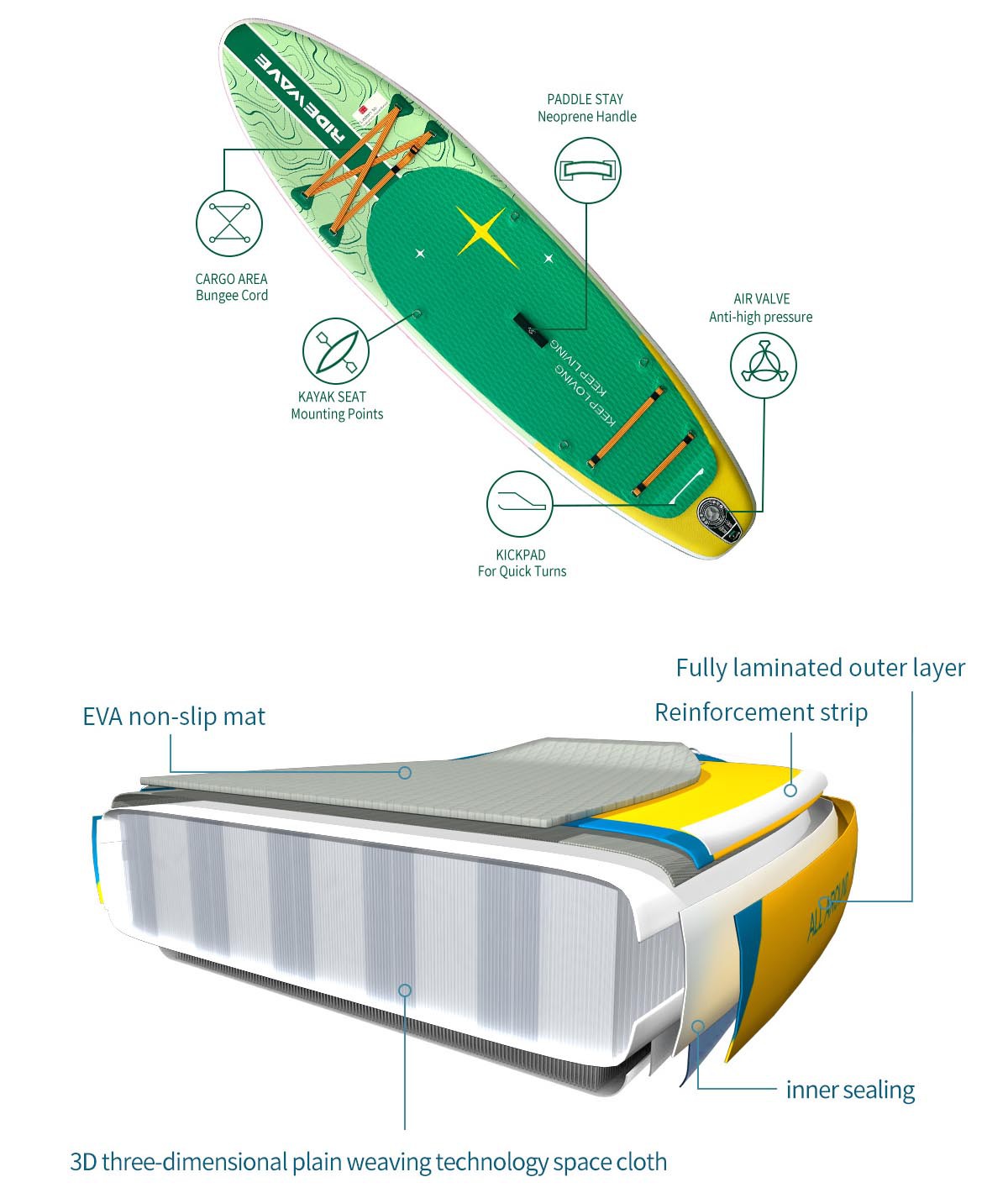
By Construction Method
There are two main construction types for SUP boards:
Inflatable SUP (iSUP): Made from PVC with drop-stitch technology. Lightweight, easy to store and transport. Lower shipping costs make it perfect for global orders.
Hard SUP (Epoxy/Fiberglass): Rigid construction, offers high performance for speed and precision. Popular in high-end and professional markets.
Many customers choose a mix of both to meet different demands. Inflatable SUPs are ideal for rental businesses, while hard boards attract advanced users and racers. Ridewave's inflatable SUPs use double-layer fusion PVC, which is strong enough for heavy commercial use.
By Hull Type
The hull of a SUP is the shape of the bottom part of the board, and it changes how the board moves in the water. For B2B buyers, understanding hull types is important because it helps you match the right board to your customers' activities.
Two main hull types:
Planing Hull – This hull is wide and flat, designed to ride on top of the water rather than cut through it. Planing hulls are stable and easy to control, making them perfect for beginners, rentals, yoga boards, and casual paddling.
Displacement Hull – This hull has a pointed nose like a canoe. It cuts through the water and allows the board to move faster with less effort. Displacement hulls are ideal for racing, touring, and long-distance paddling.
Some boards combine features of both hull types to create a versatile experience.
If you sell or rent to mostly beginners, focus on planing hulls. If your market includes fitness paddlers or long-distance tour companies, stock some displacement hull models.
Ridewave produces both planing and displacement hull SUPs, so wholesale buyers can offer a full range to meet every skill level and activity.
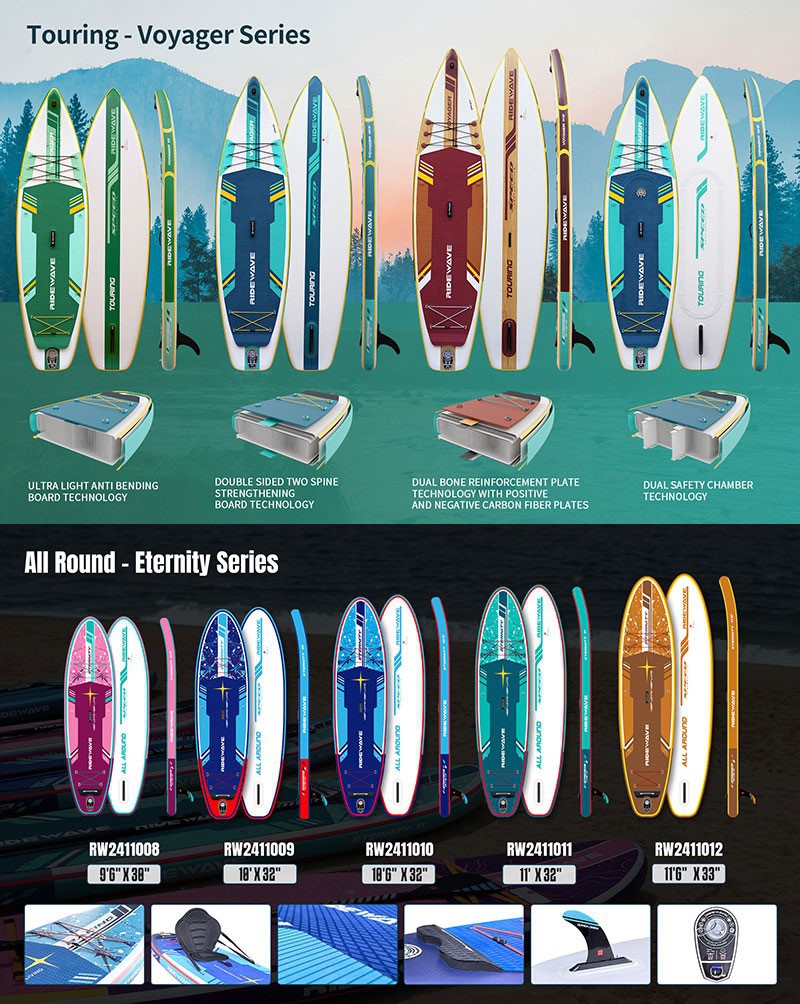
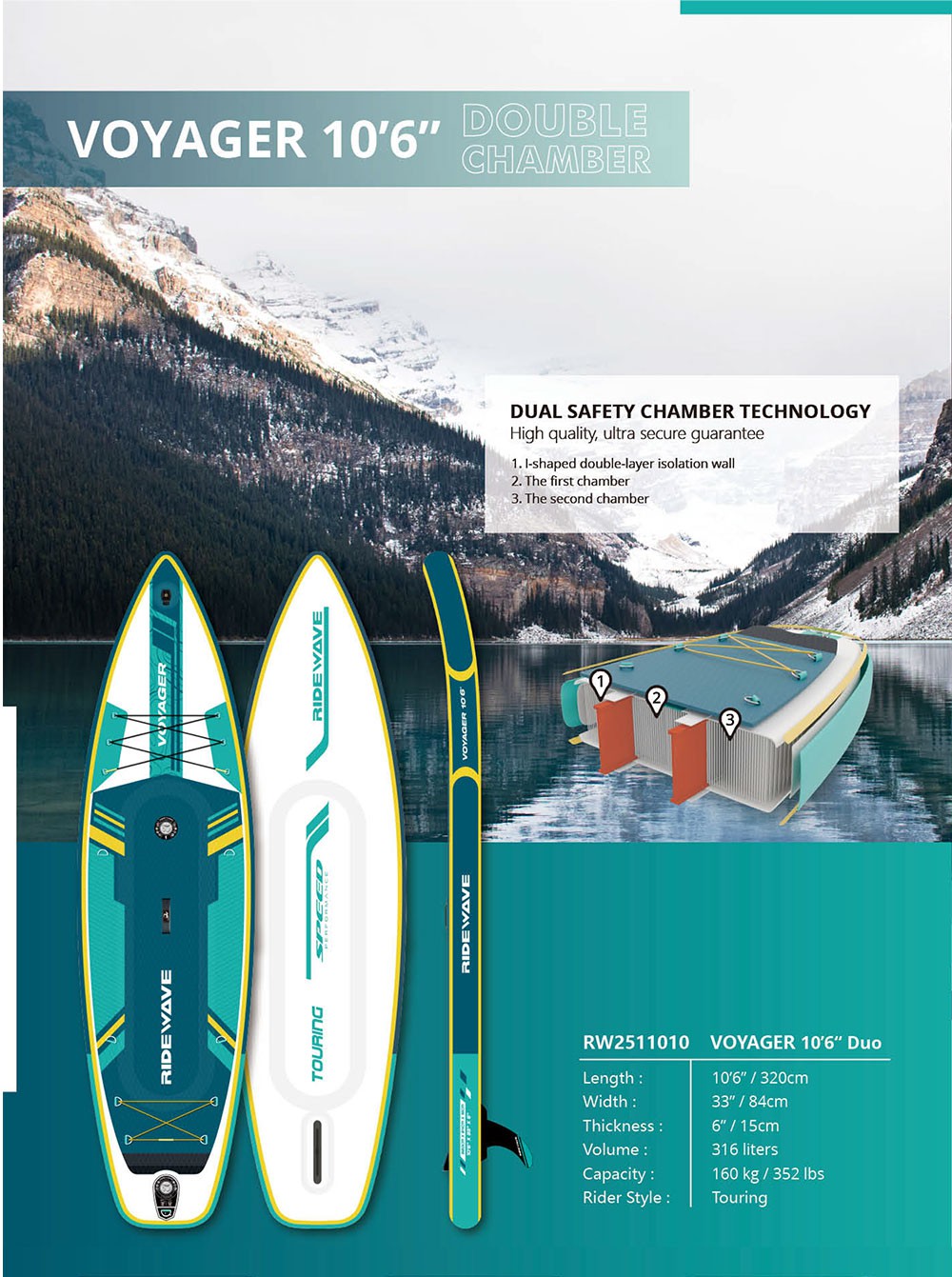
By Dimensions
Dimensions have a big impact on performance and stability. When choosing boards for your business, you need to think about length, width, and thickness.
Length:
Short boards (under 10') are easy to turn and control. Best for surfing and children.
Medium boards (10'–12') are versatile for most activities.
Long boards (over 12') are faster and better for long-distance paddling.
Width:
Wide boards (32" or more) are more stable and great for beginners.
Narrow boards are faster but harder to balance on, perfect for experienced paddlers.
Thickness:
Thicker boards hold more weight and feel more rigid.
Thinner boards are lighter and may feel more connected to the water.
A good retail mix includes mostly medium-length, wide boards for beginners, plus some narrow racing or touring boards for advanced customers.
Ridewave Example: The Ridewave 10'6 all-round SUP is a top choice for rental shops because it balances speed, stability, and maneuverability.
By Skill Level of End User
When classifying SUP boards, understanding the skill level of the end user is one of the most important points for buyers. The wrong match between board design and user skill can lead to poor experience, bad reviews, and higher return rates. For example, a first-time paddler needs a stable and forgiving board. A professional racer wants speed and precision. This is why at Ridewave, we always ask our wholesale clients about their customers before suggesting models.
Beginner SUP boards usually have a wider deck (32–34 inches), more volume, and a planing hull. This makes them stable, easy to balance, and perfect for rentals, training schools, or new buyers. Many Ridewave inflatable all-round boards are designed for this segment because they are portable and durable, ideal for busy rental locations.
Intermediate SUP boards offer a balance between speed and stability. They often have a slightly narrower width (30–32 inches), a touring or hybrid hull, and longer length for better glide. This is ideal for clients who already mastered balance and want to explore longer distances. For customers, stocking intermediate boards is a great way to upsell to repeat customers upgrading from beginner boards.
Advanced SUP boards are specialized for racing, surfing, or long expeditions. They require precise control and better paddling technique. Ridewave's carbon-reinforced racing SUPs or displacement hull touring boards are targeted for high-performance markets such as competitive clubs or professional athletes.
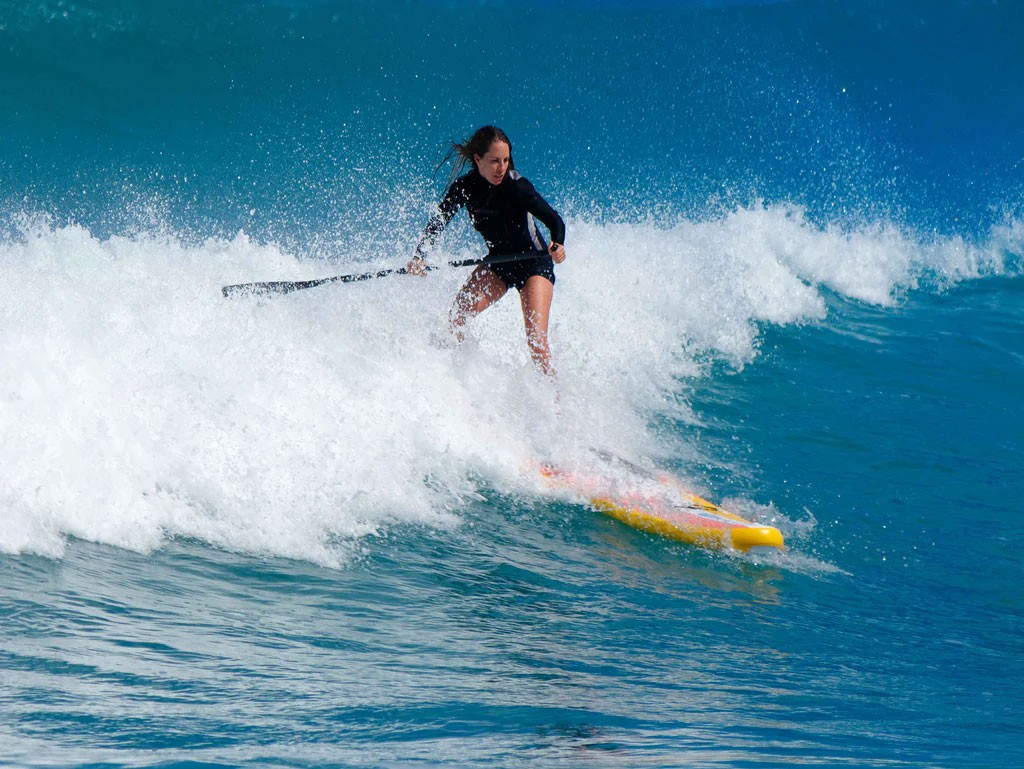
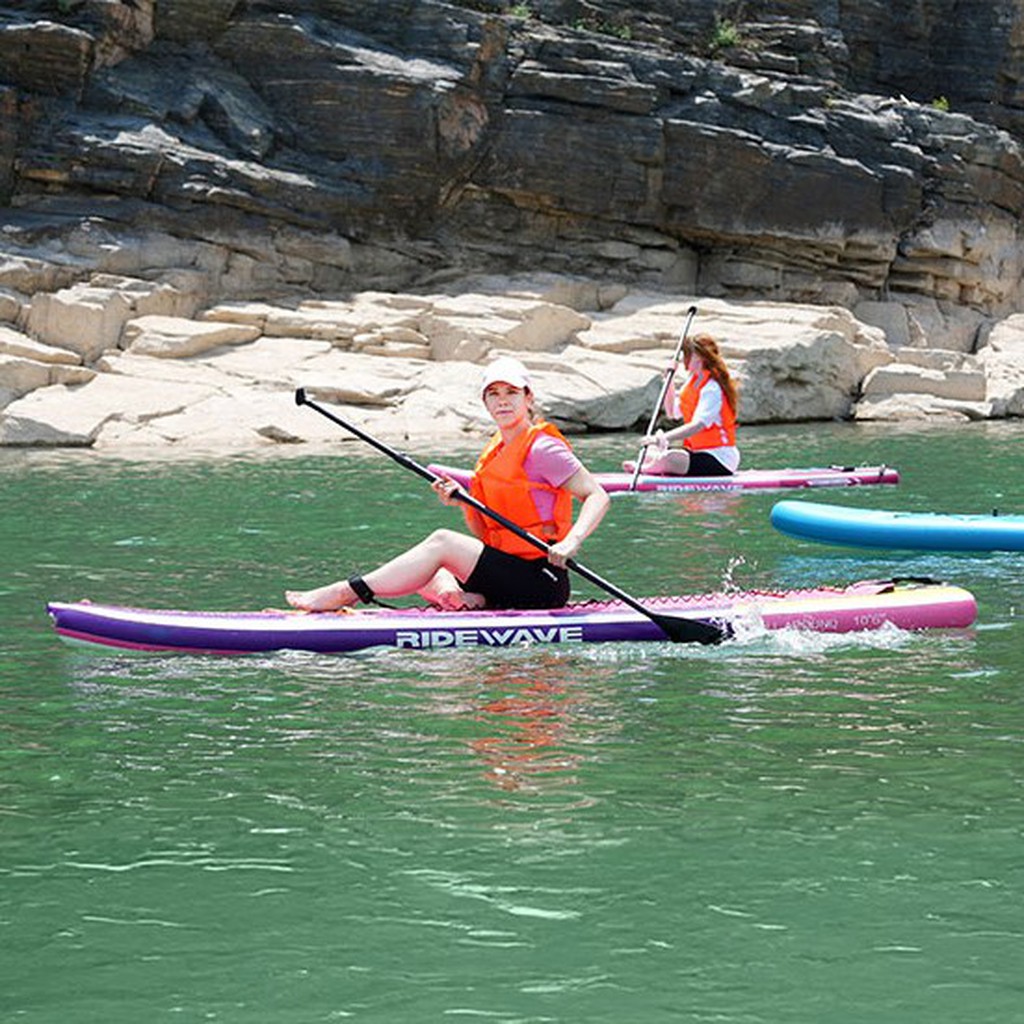
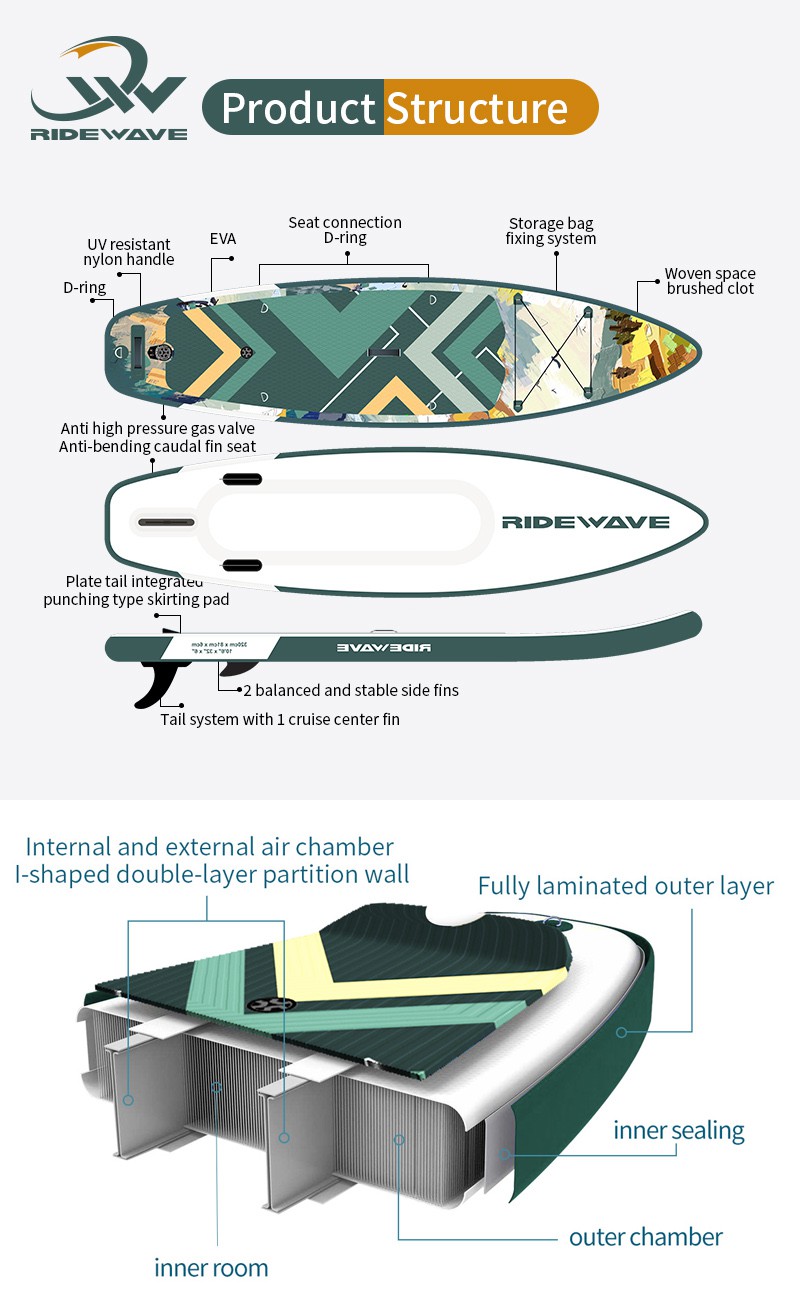
By Material & Technology
Materials and construction technology have a huge impact on board performance, durability, and price point. For B2B buyers, this is a direct factor affecting cost, customer satisfaction, and brand image.
Inflatable SUP (Drop-stitch PVC construction) is the most common for the mass market. Modern drop-stitch technology allows the board to be inflated to high pressure (12–18 PSI) and feel rigid while still being lightweight and easy to transport. Ridewave uses double-layer fusion PVC for better stiffness and puncture resistance, which is ideal for rental businesses or frequent transport.
Hard SUP (EPS foam core + fiberglass/epoxy) offers unmatched performance in terms of speed and responsiveness. They are more expensive to ship but deliver a premium feel. These are often chosen by surf schools, competition teams, or high-end retail stores.
Carbon Reinforced SUP blends the benefits of hard boards with extra stiffness and reduced weight. This appeals to advanced paddlers and professionals willing to pay more. Ridewave offers carbon options for both racing and touring boards, giving wholesalers a competitive edge in the premium segment.
By Carrying Capacity & Load Range
Load capacity is not just about weight - it is about stability, safety, and usability. A board designed for 100 kg may perform very differently from one designed for 200 kg. For commercial buyers, knowing load range helps match products to specific customer groups.
Single-rider boards are the most common. They are efficient to paddle and easy to store. Ridewave all-round 10'6" models can support up to 130 kg, making them suitable for most adults.
Tandem boards are designed for two people, often with a longer length (12–14 feet) and reinforced construction. They are popular with couples, family activities, or training sessions.
Multi-person boards (Party SUP) can hold 4–8 riders. These are ideal for group rentals, resorts, or team-building activities. Ridewave's party SUPs are made with extra-wide designs and triple-layer PVC for maximum safety, even when fully loaded.
Offering boards with various load capacities can widen your market coverage. From lightweight solo boards to heavy-duty group SUPs, each category attracts different buyers.
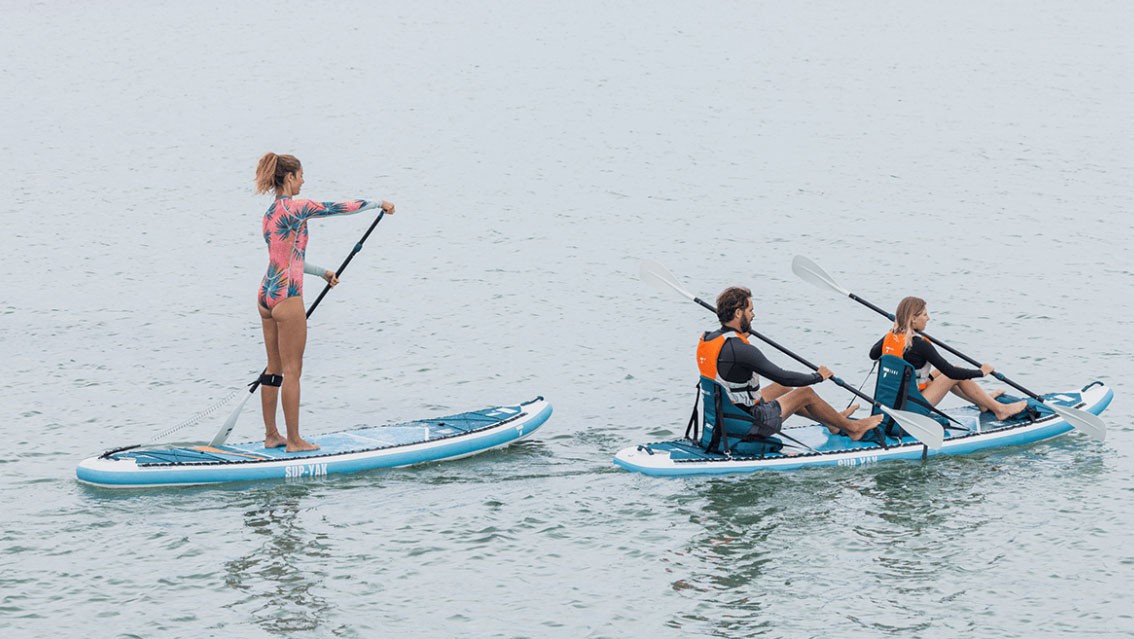
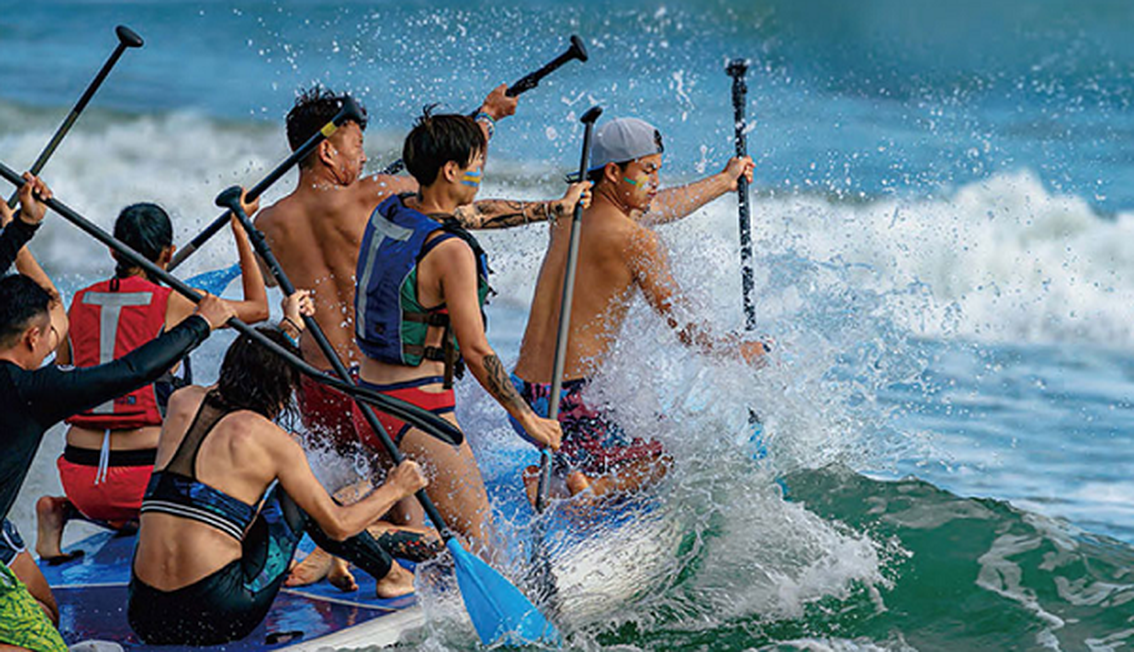
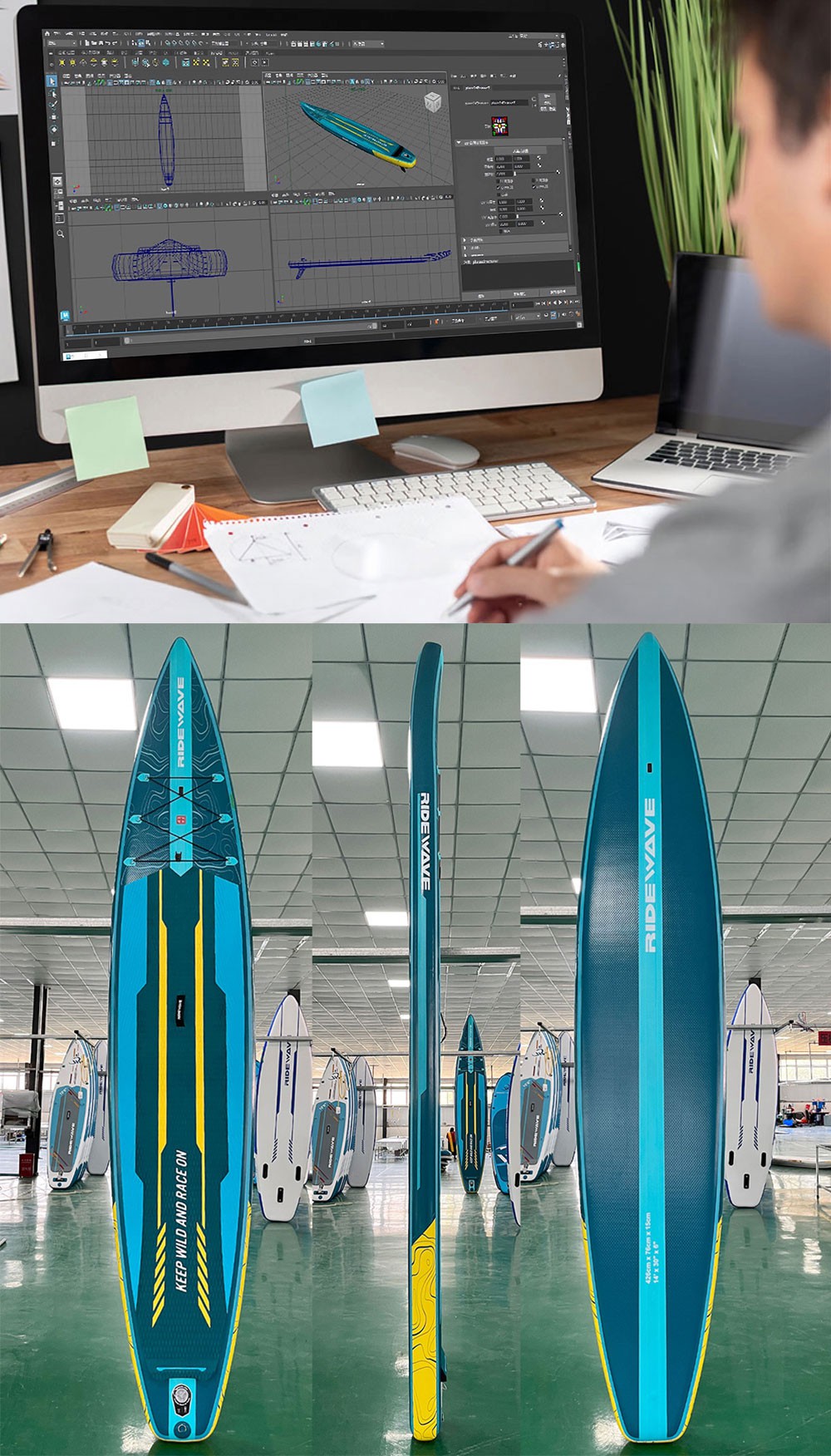
By Branding & Customization Options
For buyers, branding can be as important as performance. Customizing a SUP with your own logo, colors, and deck pad patterns helps create brand identity and increases resale value.
Ridewave provides full OEM and ODM services. This includes:
Custom deck pad colors and textures
Logo printing on deck, rails, and packaging
Special edition graphics for events or collaborations
Many of our wholesale clients use this service to launch their own paddleboard brand without investing in manufacturing facilities. This is a fast and cost-effective way to enter the SUP market.
How to Choose the Right SUP Type for Your Business
Choosing the right SUP classification for your business is a strategic decision. It depends on your target customers, selling channels, storage capacity, and logistics.
Step 1: Identify your target customer. Are they beginners, families, or professionals?
Step 2: Match the SUP type. For beginners, choose inflatable all-round boards; for professionals, go for racing or carbon-reinforced models.
Step 3: Consider logistics and storage. Inflatable SUPs reduce shipping costs, while hard boards deliver a premium feel.
Step 4: Build a product mix. Many successful B2B clients stock a variety - for example, 60% all-round, 25% touring, 10% racing, 5% special boards.
Ridewave offers expert consultation to help wholesale customers choose the best mix for their region. Our experience with global markets ensures we understand both seasonal trends and long-term demand.

Continue Your SUP Journey
If you found this guide on the classification of SUP boards helpful, we have more resources to help you choose, use, and grow your paddleboarding business. From detailed buying guides to maintenance tips and market trends, our other articles will give you the insights you need to stay ahead in the SUP industry. Explore the links below to keep learning and discover more about how Ridewave can support your success.
- Top Features Paddle Board Users Love in 2025 – What To Offer
- Why Ridewave Is Becoming A Go-To Inflatable SUP Partner in 2025
- Low MOQ, Fast Shipping: The Perfect SUP Partner For Spain Importers
- Global Inflatable SUP Market Outlook: What B2B Buyers Should Know
- How To Customize Your SUP Brand: Colors, Prints, Packaging & Accessories That Sell

